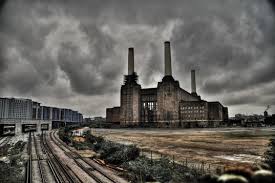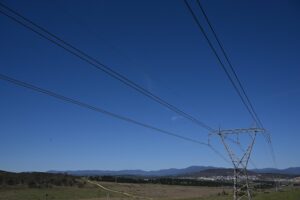The omens of trouble sometimes creep up silently and largely out of the public eye. The meteorites that destroyed the dinosaurs were initially mere twinkles on the glorious night horizon. Perhaps we ought to have raised eyebrows when Verbund, Austria‟s main electricity generator, took the extraordinary step of writing down its investment in its new Mellach CCGT plant, the largest single power plant in Austria, even while it was still under construction in 2011.
Or perhaps we should have noticed when SSE, the UK‟s blue-chip electricity generator, started quietly writing down the value of its generating portfolio in the same year. Since then, the asset impairment phenomenon has become horribly common across the EU. But when GDF Suez, Europe‟s largest utility by market value, writes off over EUR9bn from the value of its European generating assets in one fell swoop in its 2013 results, together with almost another EUR6bn of goodwill relating to European investments, then it is clear that something truly exceptional is going on.
Drivers of the power market: The ‘Battle of Helm’s Deep’
The reality is that a whole generation of Europe’s power fleet is now being wiped out, not by irreparable old age, but by a different development. European power markets have now become the battleground between two apparently irreconcilable ideas. The first is Market Competition – The idea that Market Competition is the most efficient instrument to allow a country to meet its energy needs at lowest cost, and that market-driven diversification is as good as it gets in terms of underwriting “security of supply‟.
The second idea is that climate change, or Decarbonisation is for real, and our moral obligation to future generations imply the need to decarbonise electricity markets as soon as possible, with government investment and subsidies needed to correct for the “market failure‟. These two ideas are clashing head on. The “Battle of Helm’s Deep‟ in European energy markets, between interventionist government policies promoting Decarbonisation and traditional Market Competition between incumbents, is now claiming serious casualties, and more are to be expected.
The UK‟s liberalisation experiment in the 1980s and the EC Energy Directives in the 1990s were all about giving markets the key role in driving power market decisions. Wholesale power prices would reflect scarcity or abundance, and the private sector would invest in new plants, or decommission old ones, on the basis of those market signals. For a while, it seemed to work.
Spain, for example, finding itself at the start of the millennium extremely „short‟ of new capacity, quickly added over 25000MW (at an approximate cost of EUR20bn) of new combined cycle gas turbines within its newly-liberalised market, led by companies such as Iberdrola, the owner of Scottish Power. In countries where excess capacity was evident, ageing plant was retired.
Indeed, in some cases such as the UK, companies literally went to the wall, such as TXU Europe and British Energy, whose fixed cost nuclear fleet was left uncompetitive when UK power prices collapsed in 2002. Market Competition was proving to be a ruthless „discoverer‟, constantly on the prowl to drive out inefficiency and waste, while simultaneously a cornucopia to power companies that could efficiently adapt to meet power demand.
And then the idea of clean energy and Decarbonisation got going in earnest. Appealing to Europe‟s environmentally conscious median voters, governments of both Left and Right supported and funded a subsidy binge to ensure there was substantial development in „green power‟. Today Germany has more renewable – wind and solar – power than traditional capacity on the grid, and moreover, it is shutting down its nuclear fleet over the next decade. Other EU countries are following suit.
Nearly one third of the UK‟s traditional coal- fired fleet will be shut by 2015 as a result of exacting environmental emission limits, with most of the rest apparently destined to the same fate by the early 2020s. CCGT plants all across the EU are being prematurely mothballed, displaced by subsidised renewable power with priority dispatch rights on the grid. We have all seen that memorable picture of the resting ground of the obsolete commercial aircraft in the Arizona desert – row upon row of old jumbo jets, DC 9s and 707s in the “great aviation graveyard”. Imagine the same picture now littered with power stations rather than airplanes. This is exactly what we are facing.
To return to Spain, just for a moment, many of those new built 25000MW of CCGTs, originally designed for base-load production, are currently running at load factors of 10%! That‟s equivalent to a 747 flying long haul flights with just 30 passengers on board. And sitting in the Boardroom of RWE in Essen, the CEO Peter Terium could have been forgiven if, as he announced a EUR5bn write off of the company‟s thermal gas fleet, he likened himself and the renewables pandemic to the Egyptian Pharaoh being subjected to one of the Ten Plagues: I will plague your whole country with frogs. The Nile will teem with frogs. They will come up into your palace and your bedroom and onto your bed, into the houses of your officials and on your people, and into your ovens and kneading troughs. The frogs will go up on you and your people and all your officials. (Exodus 8 1-4).
What struck us most was his prophetic and sobering remarks that moving into new business areas such as energy efficiency would never compensate the value destroyed – more than 70% of shareholder value – since 2008 – as a result of writing down and mothballing this critical generation platform.
The missing driver: Invasion of technology
Some market commentators however now foresee a “truce‟ in the battle of the ideas. On this view, the “new‟ renewables plants will happily provide the power when the wind blows and the sun shines, with the granddad traditional fossil-fuel plants providing „back up‟ when the weather does not accommodate it. This, so the argument goes, will work well for cash-strapped governments, now forced to rein in over-generous subsidy plans.
We understand the vision but doubt it will be realised. This viewpoint ignores technology, which is now invading the sector, more fiercely than ever before. The genie has now been let too far out of the bottle to be re-captured. As carbon becomes increasingly “priced‟, technological advance looks set to ensure that “distributed‟ solar generation gains ground across the EU, and smart metering will allow demand as much as supply to be ramped up and down to balance Mother Nature‟s whims of wind and sunshine.
No wonder Mr Mestrallet and other CEOs are taking the axe to the value of their traditional plants. They are dying prematurely, a lost generation overtaken by the forces of change. At the end of the day, Decarbonisation has proved to be an idea strong enough to irretrievably change the traditional European power industry. And while the Decarbonisation revolution may have been kick started by governments, its future looks increasingly likely to be secured by technologies that will be promoted by the market itself.
Nigel Robinson works in the Power Investment division and Harold Hutchinson in the Equity Research division at Investec Bank Plc’s London office. This item is republished from the Forward Curve, Investec’s magazine on global power insights and trends. Reproduced with permission.








